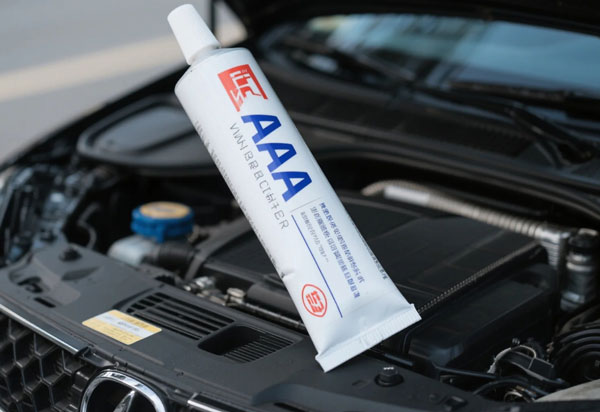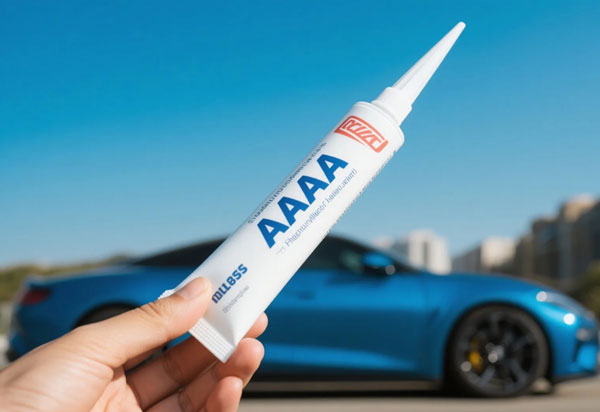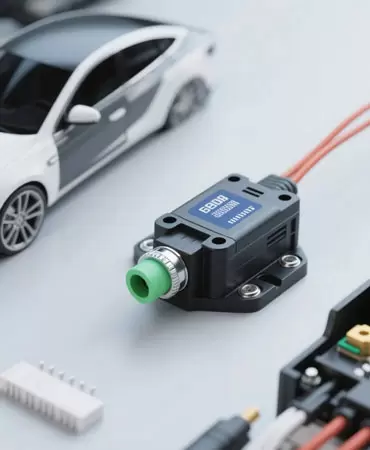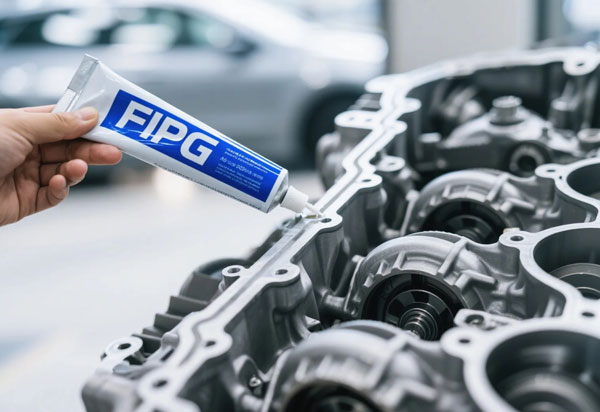 Home / News / Industry News / Performance requirements of body adhesives for different vehicle models
Home / News / Industry News / Performance requirements of body adhesives for different vehicle models 2025-10-29
In modern automotive manufacturing, automotive body adhesives have become an indispensable key material. They not only replace traditional mechanical joining methods such as welding and riveting, but also play a crucial role in improving body strength, reducing weight, enhancing sealing performance, and reducing noise.
However, different types of vehicles differ significantly in structural design, operating environment, and functional positioning, thus requiring different performance characteristics from their body adhesives. This article will comprehensively analyze the key performance requirements of body adhesives for different vehicle types—passenger cars, SUVs, commercial vehicles, new energy vehicles, and special vehicles—and discuss how to select appropriate adhesive solutions.
Passenger cars represent the largest segment of the automotive market, with body adhesives primarily used in areas such as the roof, door frames, floor, chassis, and seals.
Lightweighting is paramount: Traditional welding increases vehicle weight, while adhesive bonding reduces the number of weld points while maintaining strength, thereby achieving structural weight reduction. Passenger car manufacturers typically prefer epoxy structural adhesives or polyurethane adhesives to balance strength and toughness.
NVH performance optimization (noise, vibration, acoustic roughness): Adhesives have unique advantages in suppressing body vibration and reducing noise. Highly elastic adhesive layers effectively absorb road noise and resonance, providing passengers with a smoother and quieter ride.
Appearance and sealing requirements: For areas such as doors and windshields, adhesives must not only possess bonding strength but also excellent weather resistance and UV resistance to prevent seal failure or discoloration due to aging.
Typical application solution: A combination of high-modulus epoxy structural adhesive and elastic polyurethane sealant can improve overall rigidity while meeting comfort and durability requirements.
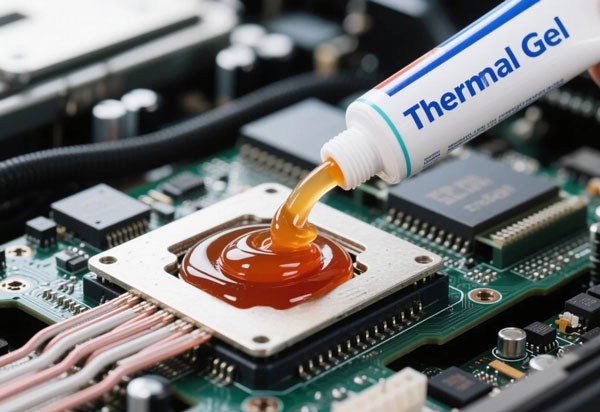
SUVs (Sport Utility Vehicles) are known for their high strength, spaciousness, and adaptability to complex road conditions. Their adhesive performance requirements lean more towards structural strength and fatigue resistance.
Structural adhesives withstand greater stress: SUV body frames are typically taller and wider, with structural components mostly made of high-strength steel or aluminum alloys. Adhesives need to possess high shear strength (>20MPa) and excellent dynamic load-bearing capacity to resist vibrations and impacts during off-road driving.
Wide temperature adaptability: SUVs are often used in outdoor, mountainous, or cold-climate environments, requiring adhesives to maintain stable performance within a temperature range of -40°C to +120°C. In these conditions, adhesive systems with high temperature resistance and low-temperature non-embrittlement properties should be selected.
Chemical resistance and waterproof sealing: Off-road vehicles are frequently exposed to mud, salt water, and oil; therefore, body adhesives must possess excellent waterproof, corrosion-resistant, and chemical corrosion-resistant properties.
Typical application: A modified epoxy structural adhesive + acrylic sealant combination combines high strength and excellent weather resistance, suitable for high-load SUV frame and door sill structures.
Commercial vehicles (such as trucks, vans, and buses) are designed with a focus on service life, load-bearing capacity, and ease of maintenance. Therefore, the requirements for adhesives lean towards durability and economy.
Aging Resistance under Long-Term Use: Commercial vehicles operate year-round in high-temperature, direct sunlight, or heavy-load environments. Adhesives must maintain their bonding performance over long periods. Antioxidants and UV absorbers need to be added to the formulation to delay aging.
Large-Area Structural Bonding: Buses and vans have large metal body panels and extensive bonding areas, requiring high adhesive layer thickness and flowability. Ease of application and uniform curing must be considered.
Cost Control and Repairability: Commercial vehicle manufacturers are typically cost-sensitive and tend to choose single-component polyurethane or epoxy adhesives to reduce costs while maintaining performance. They also require rapid curing of the adhesive layer for easy repair and replacement.
Typical Application Solution: Using economical polyurethane structural adhesives + high-elasticity sealants to meet the needs of long service life and large-area assembly.
The structural and functional design of new energy vehicles differs from that of traditional gasoline vehicles. Their body adhesives must simultaneously meet electrical performance and thermal management requirements.
Battery Compartment Bonding and Thermal Conductivity: The battery compartment is a core component of new energy vehicles. Adhesives must not only provide strong adhesion but also possess high thermal conductivity and electrical insulation to ensure battery safety and efficient thermal management.
Lightweight Composite Material Bonding: Electric vehicle bodies often utilize lightweight materials such as carbon fiber, glass fiber, or aluminum alloys. These materials are difficult to weld, placing higher demands on the interfacial compatibility and flexibility of adhesives.
High Insulation and Fire Resistance: Flame-retardant epoxy or silicone adhesives must be used near the electric drive system to ensure insulation and safety meet UL94 V-0 standards.
Low VOC and Environmental Requirements: New energy vehicle manufacturing standards place greater emphasis on environmental protection, requiring body adhesives to have low odor and low volatile organic compound (VOC) emissions to meet green manufacturing standards.
Typical Application Solution: A combination of thermally conductive epoxy structural adhesive and flame-retardant sealant is used, combining mechanical strength, thermal conductivity, and insulation safety.
Special vehicles (such as military vehicles, rescue vehicles, and engineering vehicles) operate under extreme conditions, placing more stringent requirements on the performance of their body adhesives.
Extreme Temperature and Environmental Adaptability: Adhesive strength must be maintained in environments ranging from -55°C to +150°C, and it must be resistant to frost, salt spray, and oil contamination.
Impact and Explosion Resistance: Military and armored vehicles require adhesives with high energy absorption capacity to maintain structural integrity during explosions or impacts.
Chemical Corrosion Resistance: Engineering vehicles frequently come into contact with fuel, hydraulic oil, acid and alkali solutions, etc., therefore fluorinated or modified epoxy adhesives are required to ensure chemical stability.
Long-Term Service Reliability: Special vehicles have long service cycles and low maintenance frequency, requiring adhesives with long-term aging stability (>10 years).
Typical Application Solution: A two-component modified epoxy structural adhesive + high-sealing silicone rubber system is used to ensure strength and sealing performance are maintained even under extreme conditions.
Different vehicle models vary significantly in performance, operating environment, and manufacturing costs. Therefore, when selecting body adhesives, structural design, environmental conditions, material properties, and assembly processes must be comprehensively considered.
Suitable adhesives not only improve vehicle safety and lifespan but also bring significant value in weight reduction, energy saving, and comfort.
As a professional automotive body adhesive supplier, we specialize in high-performance bonding solutions using epoxy, polyurethane, acrylic, and silicone adhesives. Our products are widely used in passenger cars, SUVs, commercial vehicles, and new energy vehicles, and have passed multiple international automotive standard certifications. We are committed to providing customers with high-strength, long-life, and environmentally friendly body adhesive system solutions, helping the automotive manufacturing industry move towards high quality and intelligence.
